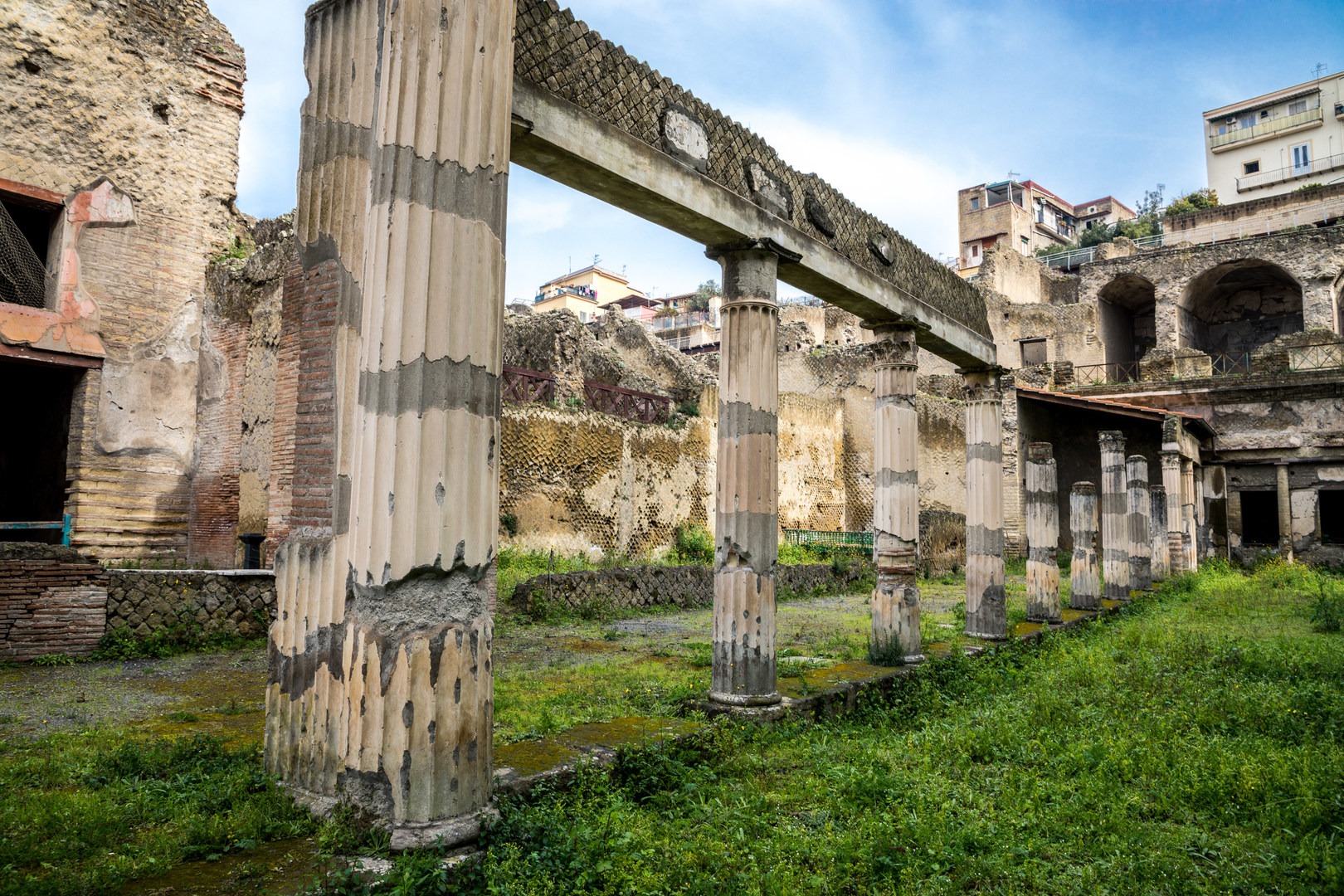You are here
Much like the ancient city of Pompeii, Herculaneum was destroyed in the eruption of Mount Vesuvius in AD 79. The site was buried under 20 meters of ash and lava. Unlike the pyroclastic flow that burned and buried Pompeii, the thick flow of lava that covered Herculaneum carbonized the wood and other organic matter preserving it, leaving behind beds, doors, food, and many other items. While most of the residents were able to escape, the remains of 300 individuals were discovered in 1997 in the boat houses near the sea wall.
The eruption of Mount Vesuvius began on the afternoon of August 24, 79, at around 1 p.m. Prior to the eruption, the volcano had been dormant for nearly 800 years. Taking everyone by surprise, the volcano shot ash and debris high into the sky. The winds at the time were blowing southeast, causing most of the ash and debris to fall on Pompeii and the surrounding area. Since Herculaneum was to the west of Mount Vesuvius, only a few centimeters of ash fell on the city during the initial eruption, allowing many of the inhabitants to flee.
The following night, the first pyroclastic flow of debris and hot gases hit the mostly empty town of Herculaneum at nearly 100 miles per hour and in excess of 500 degrees Centigrade. The hot gasses instantly killed those that were left waiting to escape by sea. Followed by a wave of six more pyroclastic flows, the site was buried. Although much of the site was buried intact and preserved, other areas of the site experience extensive damage where volcanic forces blew down columns and crumbled buildings.
Herculaneum was a wealthy town, though much smaller than the site of Pompeii, and the homes were much more lavish. You can still see the detailed tile work and artwork scattered throughout the site. It's estimated that as much as 75% of the ancient town still remains buried.
Ercolano is the modern town that is built on top of the remaining site. The site was first discovered in 1709 during the construction of a deep well. After the discovery, a prince purchased the land and began digging tunnels to unearth statues and artwork. Excavations continued on and off until modern times. After the discovery of the individuals that perished near the sea wall, studies were done on the remains to get a better understanding of the inhabitants' lifestyle, diet, and cause of death. Casts of the bones were produced to replace the bodies for viewing. Unlike the casts of Pompeii, victims that depict the actual body shape of the individuals, the body shapes at Herculaneum were not able to be preserved due to the extreme heat that vaporized the flesh and replaced it with ash.
To visit Herculaneum, you can arrive either by car or train. The Circumvesuviana Train, which runs from Naples to Sorrento, has a stop 0.3 mile from the archeological park. While riding the train, be very aware of pickpockets as they tend to frequent this train and prey on tourists. Just be vigilant and aware of your surroundings, and you will be fine. Upon arrival to the park, an entrance fee is collected and guided tours are offered at an additional fee. The site can be easily explored without a guide, but guides can give more insight to the history of the site. Allow up to four hours to view the site.
Logistics + Planning
Current Weather: Powered by Dark Sky































Comments
Sign In and share them.